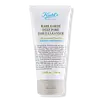What's inside
What's inside
 Key Ingredients
Key Ingredients

 Benefits
Benefits

 Concerns
Concerns

 Ingredients Side-by-side
Ingredients Side-by-side

Water
Skin ConditioningKaolin
AbrasiveGlycerin
HumectantAlcohol Denat.
AntimicrobialSodium Cocoyl Glycinate
CleansingCoco-Betaine
CleansingAcrylates Copolymer
Sodium Chloride
MaskingCI 77891
Cosmetic ColorantSolum Diatomeae
AbrasivePhenoxyethanol
PreservativePEG-14m
Emulsion StabilisingGlycol Distearate
EmollientSodium Benzoate
MaskingAloe Barbadensis Leaf Juice
Skin ConditioningSalicylic Acid
MaskingAvena Sativa Kernel Flour
AbrasiveTocopherol
AntioxidantSodium Hydroxide
BufferingAllantoin
Skin ConditioningWater, Kaolin, Glycerin, Alcohol Denat., Sodium Cocoyl Glycinate, Coco-Betaine, Acrylates Copolymer, Sodium Chloride, CI 77891, Solum Diatomeae, Phenoxyethanol, PEG-14m, Glycol Distearate, Sodium Benzoate, Aloe Barbadensis Leaf Juice, Salicylic Acid, Avena Sativa Kernel Flour, Tocopherol, Sodium Hydroxide, Allantoin
Water
Skin ConditioningCoco-Glucoside
CleansingPropylene Glycol
HumectantAmmonium Polyacryloyldimethyl Taurate
Emulsion StabilisingGlycerin
HumectantCoco-Betaine
CleansingSodium Cocoyl Isethionate
CleansingSodium Methyl Cocoyl Taurate
CleansingDipropylene Glycol
HumectantSodium Chloride
MaskingButylene Glycol
HumectantPhenoxyethanol
PreservativeHydrogenated Coconut Acid
EmollientCapryloyl Salicylic Acid
ExfoliatingCoconut Acid
CleansingT-Butyl Alcohol
PerfumingSodium PCA
HumectantCamphor
MaskingMenthol
MaskingBoswellia Serrata Extract
Skin ConditioningSodium Isethionate
CleansingHamamelis Virginiana Water
AstringentPeumus Boldus Leaf Extract
MaskingDisodium EDTA
Alcohol
AntimicrobialZingiber Officinale Root Extract
MaskingSanguisorba Officinalis Root Extract
CleansingCinnamomum Cassia Bark Extract
MaskingXanthan Gum
EmulsifyingLaminaria Saccharina Extract
Skin ProtectingZinc Sulfate
AntimicrobialPyridoxine Hcl
Skin ConditioningSodium Hydroxide
BufferingCitric Acid
BufferingWater, Coco-Glucoside, Propylene Glycol, Ammonium Polyacryloyldimethyl Taurate, Glycerin, Coco-Betaine, Sodium Cocoyl Isethionate, Sodium Methyl Cocoyl Taurate, Dipropylene Glycol, Sodium Chloride, Butylene Glycol, Phenoxyethanol, Hydrogenated Coconut Acid, Capryloyl Salicylic Acid, Coconut Acid, T-Butyl Alcohol, Sodium PCA, Camphor, Menthol, Boswellia Serrata Extract, Sodium Isethionate, Hamamelis Virginiana Water, Peumus Boldus Leaf Extract, Disodium EDTA, Alcohol, Zingiber Officinale Root Extract, Sanguisorba Officinalis Root Extract, Cinnamomum Cassia Bark Extract, Xanthan Gum, Laminaria Saccharina Extract, Zinc Sulfate, Pyridoxine Hcl, Sodium Hydroxide, Citric Acid
 Reviews
Reviews

Ingredients Explained
These ingredients are found in both products.
Ingredients higher up in an ingredient list are typically present in a larger amount.
Coco-Betaine is the natural version of Cocamidopropyl Betaine. It is often derived from coconuts.
Coco-Betaine is a surfactant, meaning it helps remove dirt and oil from the skin.
Glycerin is already naturally found in your skin. It helps moisturize and protect your skin.
A study from 2016 found glycerin to be more effective as a humectant than AHAs and hyaluronic acid.
As a humectant, it helps the skin stay hydrated by pulling moisture to your skin. The low molecular weight of glycerin allows it to pull moisture into the deeper layers of your skin.
Hydrated skin improves your skin barrier; Your skin barrier helps protect against irritants and bacteria.
Glycerin has also been found to have antimicrobial and antiviral properties. Due to these properties, glycerin is often used in wound and burn treatments.
In cosmetics, glycerin is usually derived from plants such as soybean or palm. However, it can also be sourced from animals, such as tallow or animal fat.
This ingredient is organic, colorless, odorless, and non-toxic.
Glycerin is the name for this ingredient in American English. British English uses Glycerol/Glycerine.
Learn more about GlycerinPhenoxyethanol is a preservative that has germicide, antimicrobial, and aromatic properties. Studies show that phenoxyethanol can prevent microbial growth. By itself, it has a scent that is similar to that of a rose.
It's often used in formulations along with Caprylyl Glycol to preserve the shelf life of products.
Chances are, you eat sodium chloride every day. Sodium Chloride is also known as table salt.
This ingredient has many purposes in skincare: thickener, emulsifier, and exfoliator.
You'll most likely find this ingredient in cleansers where it is used to create a gel-like texture. As an emulsifier, it also prevents ingredients from separating.
There is much debate on whether this ingredient is comedogenic. The short answer - comedogenic ratings don't tell the whole story. Learn more about comegodenic ratings here.
The concensus about this ingredient causing acne seems to be divided. Research is needed to understand if this ingredient does cause acne.
Scrubs may use salt as the primary exfoliating ingredient.
Learn more about Sodium ChlorideSodium Hydroxide is also known as lye or caustic soda. It is used to adjust the pH of products; many ingredients require a specific pH to be effective.
In small amounts, sodium hydroxide is considered safe to use. However, large amounts may cause chemical burns due to its high alkaline.
Your skin has a natural pH and acid mantle. This acid mantle helps prevent harmful bacteria from breaking through. The acid mantle also helps keep your skin hydrated.
"Alkaline" refers to a high pH level. A low pH level would be considered acidic.
Learn more about Sodium HydroxideWater. It's the most common cosmetic ingredient of all. You'll usually see it at the top of ingredient lists, meaning that it makes up the largest part of the product.
So why is it so popular? Water most often acts as a solvent - this means that it helps dissolve other ingredients into the formulation.
You'll also recognize water as that liquid we all need to stay alive. If you see this, drink a glass of water. Stay hydrated!
Learn more about Water